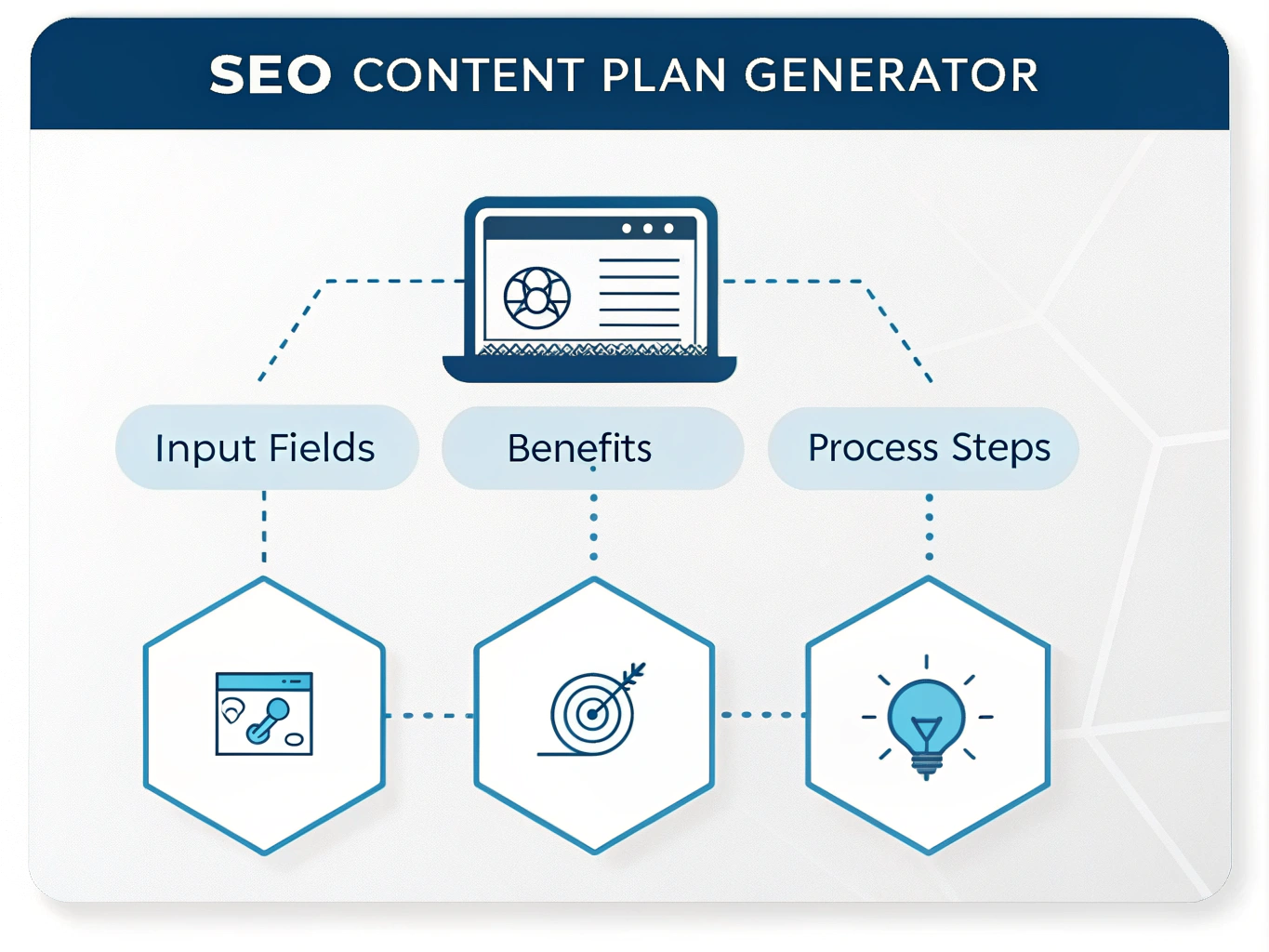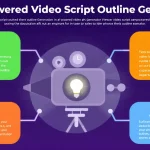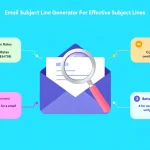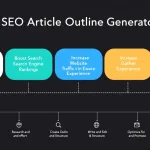Is this tool helpful?
How to Use the SEO Content Plan Generator Effectively
Follow these simple steps to create a detailed, SEO-optimized article outline using the tool:
-
Main topic for the SEO-optimized article: Enter the core subject of your article.
Example inputs:
– “Remote Work Trends in 2024”
– “Organic Gardening Tips for Urban Farmers” -
Target audience (optional): Specify the group you want to reach to tailor the content accordingly.
Example inputs:
– “Freelancers and digital nomads”
– “Home gardening enthusiasts” -
Industry-specific information or context (optional): Add details relevant to your niche or recent industry developments.
Example inputs:
– “Impact of hybrid work models on productivity”
– “Latest organic pest control methods” - Generate your SEO Content Plan: Click the generate button to receive a comprehensive content outline covering keywords, headings, and suggested word counts.
- Review and copy the results: Read through the suggested content plan and use the copy feature to easily transfer it to your editor or CMS.
Providing clear, detailed input improves the relevancy and depth of the generated SEO content plan.
Introduction to the SEO Content Plan Generator
The SEO Content Plan Generator transforms your article topic into a structured, SEO-friendly content strategy. It helps streamline your planning by delivering an outline tailored to your subject and audience needs, saving you time and improving your content’s search engine ranking potential.
What This Tool Does
This tool uses advanced language processing to create a detailed content plan based on your topic and optional context. It suggests:
- Key article sections and subheadings
- Recommended word counts for each section
- Relevant keywords, including long-tail and semantic phrases
- Content distribution strategies tailored to your target audience
- Frequently asked questions based on popular search queries
Benefits of Using the SEO Content Plan Generator
- Save Time: Cut down research and planning from hours to minutes.
- Increase Search Visibility: Gain a content outline optimized for modern SEO standards.
- Improve Content Quality: Produce well-structured, comprehensive articles that cover all key points.
- Target Your Audience: Customize content to resonate with specific reader groups.
- Enhance Engagement: Address common questions to boost user interaction and time on page.
Practical Uses of the SEO Content Plan Generator
1. Blogging and Article Writing
If you regularly create blog posts or articles, this tool helps you form a strong content structure quickly. For example, when writing about “Electric Vehicle Charging Infrastructure,” the tool can generate an outline like this:
- Introduction (150 words)
- Current State of EV Charging Stations (300 words)
- Government Initiatives and Subsidies (350 words)
- Technological Innovations in Charging (300 words)
- Challenges in Infrastructure Deployment (350 words)
- Future Outlook for Electric Mobility (250 words)
- Conclusion (150 words)
- FAQ Section (5-7 questions)
2. E-commerce Product Content
E-commerce professionals can design SEO-rich product descriptions that attract organic traffic. For a product like a “Wireless Noise Cancelling Headphones,” the generated content plan might include:
- Product Overview (120 words)
- Key Features and Advantages (300 words)
- Technical Specifications (200 words)
- Usage Tips and Best Practices (250 words)
- Customer Reviews Summary (150 words)
- FAQs (5-7 questions)
3. Educational and Training Materials
For educators creating course content, this tool generates clear lesson plans covering all critical topics. For example, in a course titled “Fundamentals of Personal Finance,” the outline may look like:
- Course Overview (200 words)
- Budgeting Basics (350 words)
- Savings and Investments (400 words)
- Debt Management Strategies (300 words)
- Retirement Planning (300 words)
- Common Financial Mistakes (250 words)
- Practical Exercises and Case Studies (150 words)
- FAQ Section (5-7 questions)
4. Business Reports and Whitepapers
Businesses can prepare organized, SEO-focused reports and whitepapers. For a topic like “Blockchain Applications in Supply Chain Management,” the outline may include:
- Executive Summary (200 words)
- Overview of Blockchain Technology (350 words)
- Use Cases in Supply Chain (400 words)
- Benefits and Limitations (350 words)
- Case Studies (300 words)
- Future Trends (250 words)
- Recommendations (150 words)
- FAQ Section (5-7 questions)
Frequently Asked Questions
How does the SEO Content Plan Generator work?
The tool analyzes your input using natural language processing and SEO best practices. It creates a detailed content outline that includes keyword suggestions, headings with recommended word counts, and strategic content distribution advice to maximize search engine performance.
Can I use the generated content plan for different types of articles?
Yes, the content plan adapts to various formats like blog posts, whitepapers, product descriptions, and educational materials. You may need to tweak the structure slightly based on your specific content needs.
How long does it take to generate a content plan?
The generation process usually takes just a few minutes, allowing you to quickly move from planning to writing.
Benefits of Incorporating Long-Tail Keywords in Your Content Plan
Including long-tail and semantic keywords in your SEO content plan improves your article’s relevance and search ranking. These keywords attract targeted traffic by matching specific search queries your audience uses.
- Long-tail keywords reduce competition and increase the chance of ranking higher.
- They help address specific user intents better than broad keywords.
- Incorporating them into headings and body text enhances the content’s clarity and SEO.
Using our tool, you get suggestions for such keywords, ensuring your content appeals both to readers and search engines.
Important Disclaimer
The calculations, results, and content provided by our tools are not guaranteed to be accurate, complete, or reliable. Users are responsible for verifying and interpreting the results. Our content and tools may contain errors, biases, or inconsistencies. Do not enter personal data, sensitive information, or personally identifiable information in our web forms or tools. Such data entry violates our terms of service and may result in unauthorized disclosure to third parties. We reserve the right to save inputs and outputs from our tools for the purposes of error debugging, bias identification, and performance improvement. External companies providing AI models used in our tools may also save and process data in accordance with their own policies. By using our tools, you consent to this data collection and processing. We reserve the right to limit the usage of our tools based on current usability factors.







